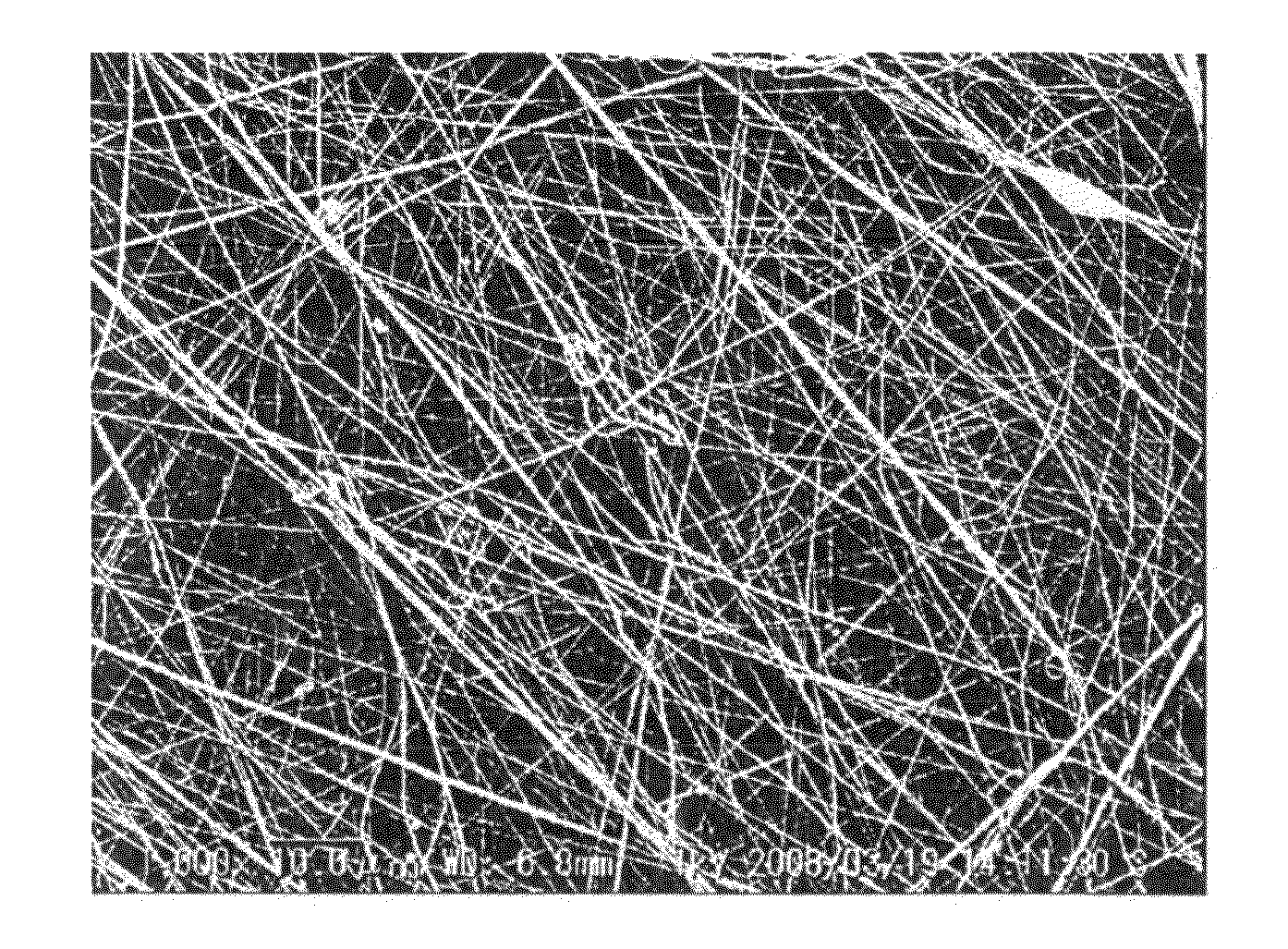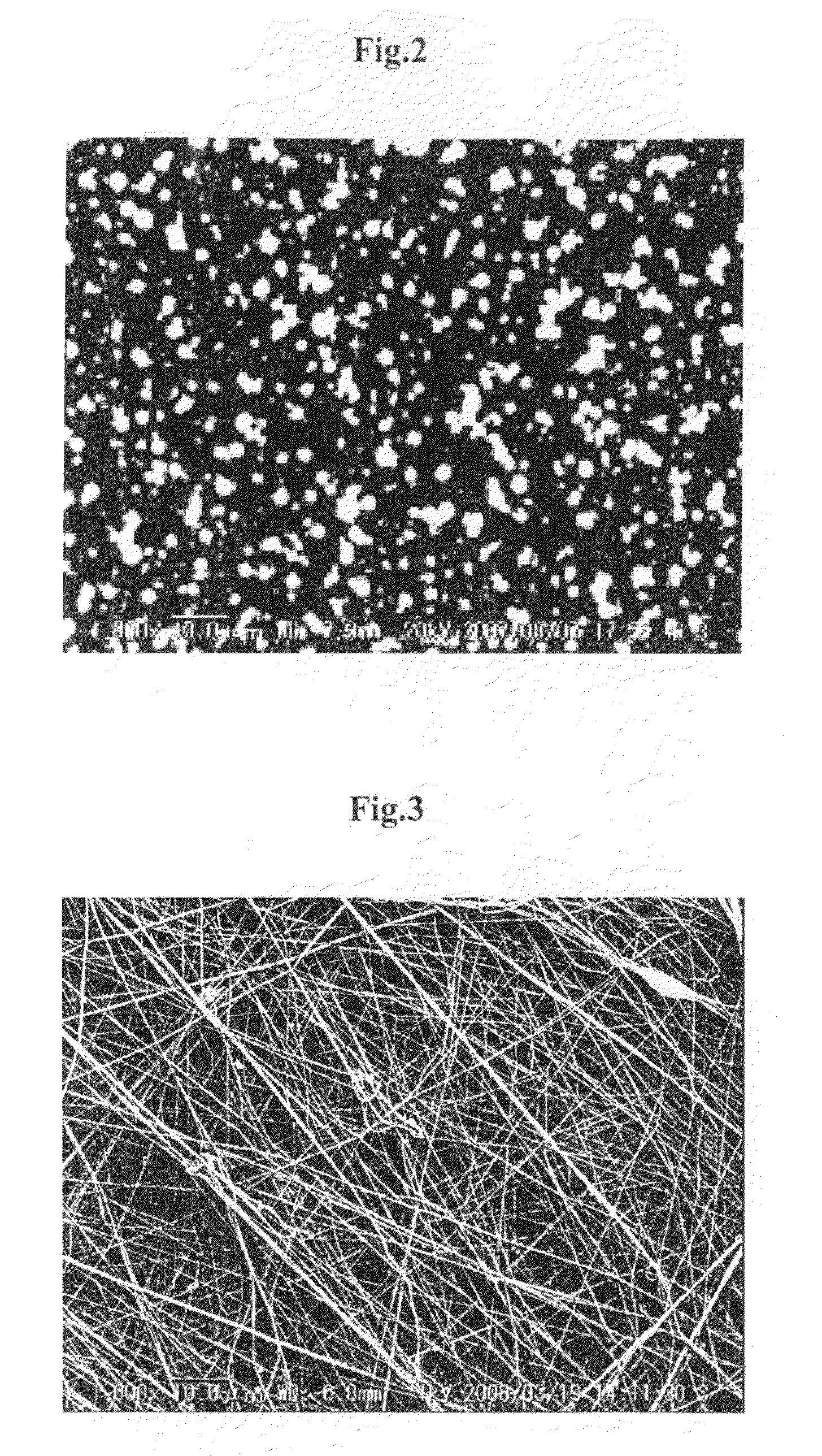Polymer fiber material, method of producing the same, and filter for filtering fluid
a technology of polymer fiber and filter fluid, which is applied in the direction of weaving, filtration separation, and separation processes, can solve the problems of short life, lifetime and removal efficiency of filters, and insufficient removal of ions in the significantly low concentration region
- Summary
- Abstract
- Description
- Claims
- Application Information
AI Technical Summary
Benefits of technology
Problems solved by technology
Method used
Image
Examples
examples
[0085]Examples and comparative examples will be hereinafter described.
example 1
[0093]A solution containing PVDF of 10% by weight, Nafion of 8.3% by weight, water of 4.2% by weight, 1-propanol of 4.2% by weight, and DMAc of 73.3% by weight was prepared as a solution containing the non-electrolytic polymer and the electrolytic polymer. The resultant solution was attempted to be used for the electro spinning under conditions the same as those of the Comparative Example 1. The solution easily gelated and was therefore warmed to be maintained at a temperature of approximately 45° C. during the electro spinning. FIG. 3 is a photograph in which platinum is vapor-deposited on the resultant fibers, taken using SEM at a magnification of 1000×.
[0094]
[0095]As illustrated in FIG. 3, fibers each having a size of 200 nm were produced by the electro spinning, and hybrid polymer fiber material having a thickness of 50 μm and consisting of the fibers was produced. Furthermore, the hybrid polymer fiber materials were stacked in a planar manner, thereby producing a flat film of n...
example 2
[0096]A solution containing PVDF of 15% by weight, Nafion of 4.2% by weight, water of 2.1% by weight, 1-propanol of 2.1% by weight, and DMAc of 76.6% by weight was prepared as a solution containing the non-electrolytic polymer and the electrolytic polymer. The resultant solution was attempted to be used for the electro spinning under conditions the same as those of the Comparative Example 1. The solution was easily gelated and was therefore warmed to be maintained at a temperature of approximately 45° C. during the electro spinning. FIG. 4 is a photograph in which platinum is vapor-deposited on the resultant fibers, using SEM at a magnification of 1000×.
[0097]
[0098]As illustrated in FIG. 4, fibers each having a size of 400 nm were produced by the electro spinning, and hybrid polymer fiber material having a thickness of 50 μm and consisting of the fibers produced. Furthermore, the hybrid polymer fiber materials were stacked in a planar manner, thereby producing a flat film of nonwove...
PUM
| Property | Measurement | Unit |
|---|---|---|
| temperature | aaaaa | aaaaa |
| temperature | aaaaa | aaaaa |
| diameter | aaaaa | aaaaa |
Abstract
Description
Claims
Application Information
 Login to View More
Login to View More - R&D
- Intellectual Property
- Life Sciences
- Materials
- Tech Scout
- Unparalleled Data Quality
- Higher Quality Content
- 60% Fewer Hallucinations
Browse by: Latest US Patents, China's latest patents, Technical Efficacy Thesaurus, Application Domain, Technology Topic, Popular Technical Reports.
© 2025 PatSnap. All rights reserved.Legal|Privacy policy|Modern Slavery Act Transparency Statement|Sitemap|About US| Contact US: help@patsnap.com



